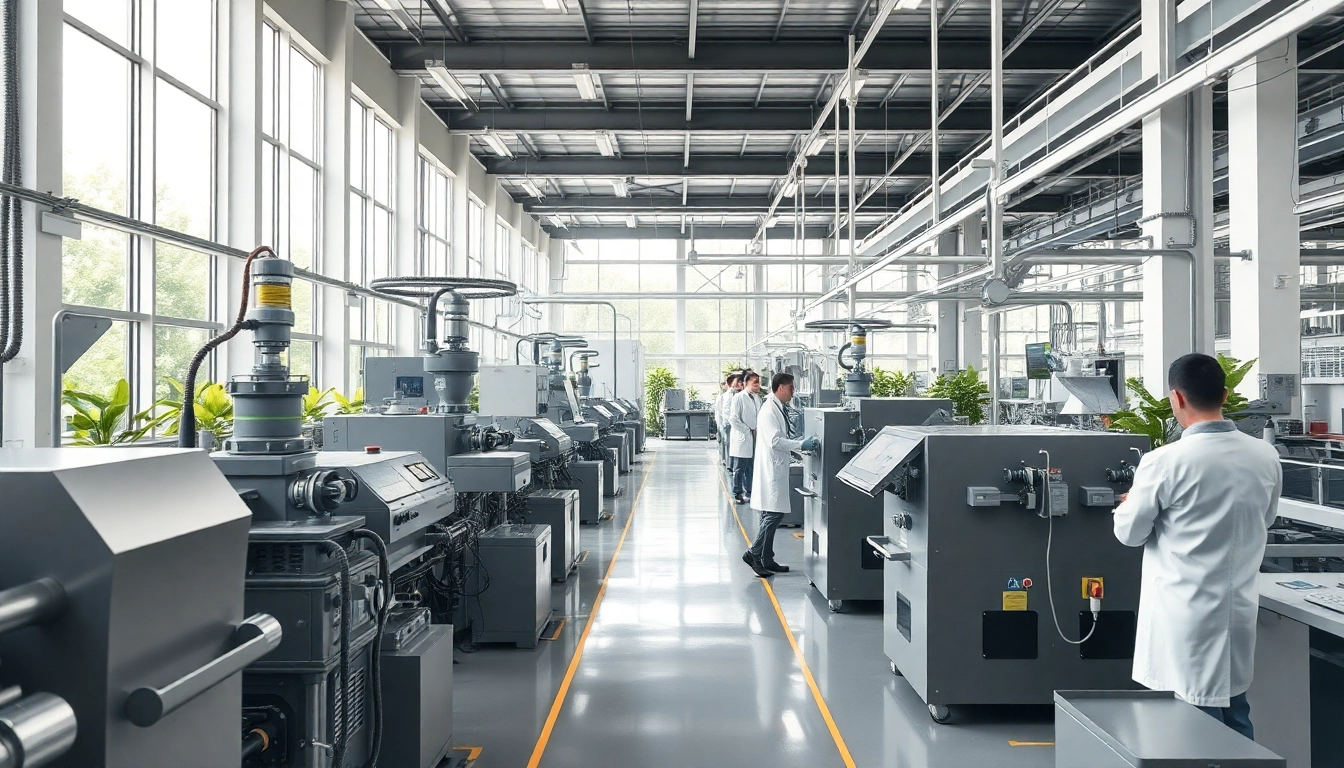Understanding Cellulose Ether Production
Cellulose ethers, derived from cellulose—a natural polymer extracted from plants—play a vital role in various industries due to their unique properties. As demand for cellulose ethers continues to grow across multiple sectors, understanding the nuances of production within a Cellulose ether factory becomes indispensable for manufacturers looking to optimize processes and ensure product quality.
What is Cellulose Ether?
Cellulose ethers are a diverse group of cellulose derivatives that have been modified chemically to enhance their performance characteristics. They are widely recognized for their ability to form viscous solutions when mixed with water and are instrumental in applications spanning pharmaceuticals, food production, paints, coatings, and more. Among the most common types of cellulose ethers include methylcellulose (MC), hydroxypropyl methylcellulose (HPMC), and carboxymethyl cellulose (CMC)—each possessing unique attributes suited for specific applications.
The Importance of Cellulose Ethers in Modern Industries
Cellulose ethers serve critical functions across various sectors. In the pharmaceutical industry, they are used as excipients in drug formulations, enhancing the stability, solubility, and absorption rates of active ingredients. In the food industry, cellulose ethers serve as thickening agents and emulsifiers, improving texture and shelf-life. In construction, they are integral to dry-mix mortars, improving workability and adhesion. The widespread applicability of cellulose ethers illustrates their significance in promoting product efficacy, sustainability, and consumer satisfaction.
Key Properties of Cellulose Ethers
The performance of cellulose ethers is dictated by several key properties, including:
- Water Solubility: Cellulose ethers can be formulated to dissolve in cold or hot water, allowing various application methods.
- Thickening Ability: Their capacity to thicken solutions is invaluable in product formulations, particularly in food and pharmaceuticals.
- Film-Forming Capabilities: Cellulose ethers can create thin films, enhancing the controlled release of substances in drug delivery systems.
- Stability: They exhibit good chemical stability, facilitating their use in arduous environmental conditions.
Designing an Efficient Cellulose Ether Factory
Setting up an efficient cellulose ether factory demands careful planning and consideration of various factors, including layout, equipment, safety standards, and workflow management. These elements collectively influence production efficiency and product quality.
Essential Equipment for Production
The manufacturing process of cellulose ethers involves several key pieces of equipment, including:
- Reactor Vessels: Used for the etherification process, where cellulose is treated with chemicals to modify its structure.
- Drying Equipment: Important for removing moisture from the final product, ensuring it meets required standards for storage and transport.
- Packing Machines: Automate the packaging process, improving efficiency and precision.
Each component must be selected based on the production scale and specific requirements of the cellulose ether being manufactured.
Optimal Layout for Workflow Efficiency
A well-designed factory layout contributes significantly to production efficiency. Key considerations must include:
- Flow Optimization: The layout should facilitate a seamless flow of raw materials through to the finished product, minimizing bottlenecks.
- Access Points: Ensure easy access for maintenance, cleaning, and emergency protocols to uphold safety standards.
- Modularity: Design for potential scalability, allowing the factory to adapt to increasing demand without a complete overhaul.
Safety and Compliance Standards
Adhering to safety and compliance regulations is paramount in a cellulose ether factory. This includes following guidelines set forth by local authorities regarding chemical handling, employee safety practices, and environmental protection measures. Regular audits and employee training programs should be implemented to promote a culture of safety and compliance.
Raw Materials and Their Impact
The quality of raw materials utilized in the production of cellulose ethers has a direct impact on the performance characteristics of the final products. Understanding sources, maintaining relations with suppliers, and ensuring overall quality is essential for a successful operation.
Choosing Quality Cellulose Sources
Quality cellulose is pivotal for producing high-quality cellulose ethers. Sources may include cotton linters, wood pulp, or agricultural residues, each presenting unique advantages and challenges. Factors to consider when selecting cellulose sources include fibers’ purity, consistency, and mechanical properties.
Impact of Raw Material Quality on Final Products
The quality of cellulose directly influences the performance attributes of cellulose ethers. High-purity cellulose yields better solubility and viscosity characteristics, leading to improved product functionality. Conversely, inferior raw materials may result in inconsistent batches that fail to meet performance specifications.
Supplier Relations for Consistent Quality
Building strong relationships with suppliers is crucial for ensuring consistent quality. Regular communication and collaboration can facilitate better sourcing strategies, quality assurance measures, and cost management. Establishing long-term partnerships can lead to enhanced product innovation and less variability in raw material supply chains.
Quality Control Measures in a Cellulose Ether Factory
Implementing rigorous quality control (QC) measures is essential in maintaining product integrity and meeting industry standards. Quality assurance assessments should occur at various stages of the production process.
Setting Quality Benchmarks
To uphold quality, manufacturers should establish clear benchmarks based on industry standards and customer expectations. These benchmarks should cover attributes such as viscosity, solubility, and chemical stability, fostering consistency in the final product.
Techniques for Continuous Monitoring
Continuous monitoring techniques, such as statistical process control (SPC), can provide real-time feedback on production metrics. Implementing automated systems for tracking production data can help identify variances from benchmarks, allowing for proactive adjustments.
Addressing Common Quality Issues
Quality issues, such as batch-to-batch inconsistency or altered viscosity, can arise during production. Addressing these problems requires a team that is well trained in troubleshooting methods, including root cause analysis (RCA) and corrective action plans. Constant training and employee engagement in QC processes can mitigate the likelihood of recurring issues.
Future Trends in the Cellulose Ether Production Industry
The cellulose ether production industry is evolving rapidly, driven by advancements in technology and growing consumer demands for sustainable products. Staying informed about emerging trends is essential for manufacturers.
Sustainability in Manufacturing
As industries focus on reducing their carbon footprints, sustainable manufacturing practices are becoming increasingly prevalent. This involves using renewable resources, minimizing waste, and employing eco-friendly chemicals in the production process. Strategies such as recycling water and utilizing biomass for energy can contribute to more sustainable operations.
Automation and Technology Advancements
The rise of automation in manufacturing processes can enhance efficiency and reduce labor costs. Technologies such as artificial intelligence (AI) and machine learning (ML) are being integrated into production lines to monitor processes and optimize production schedules, resulting in consistent quality and reduced downtime.
Market Dynamics and Evolving Applications
The demand for cellulose ethers is growing in emerging markets, driven by their versatile applications. As industries continue to discover new uses for cellulose ethers—particularly in pharmaceuticals, cosmetics, and building materials—manufacturers must remain agile, adapting their strategies to meet shifting market dynamics and customer preferences.




